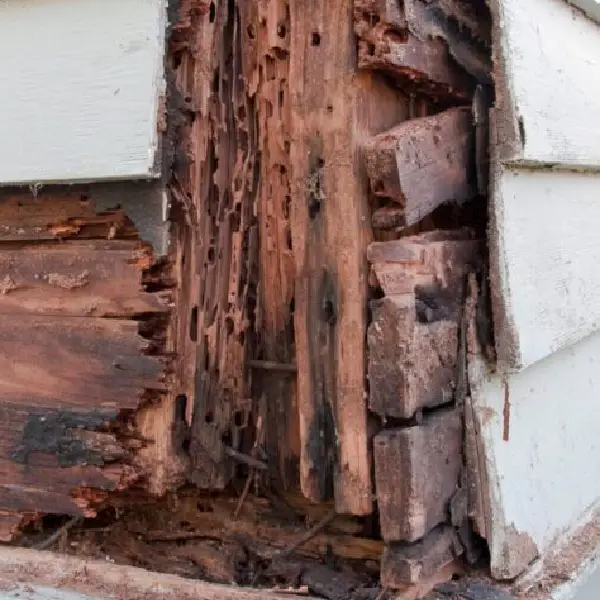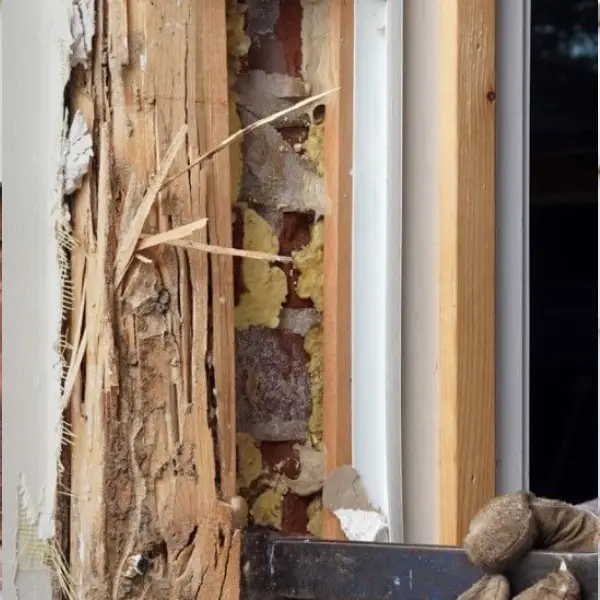What is a WDO? A Guide to Wood Destroying Organism Inspections

A wood-destroying pest inspection is a comprehensive assessment of a building to find any indications of WDOs, including termites, carpenter ants, and wood-boring beetles.
Visual examinations of the building's exterior and interior, as well as any crawl spaces and attics that are accessible, are usually part of a pest inspection.
The inspector will be on the lookout for any indications of WDO activity, such as frass (insect droppings), mud tubes, or damaged wood.
The inspector will give a written report outlining their findings following this part of home inspection.
Any WDOs that were discovered will be detailed in the report, along with suggestions for maintenance or fixes.
Wood Destroying Organisms
Any organism that compromises the structural integrity of wood is considered a wood-destroying organism (WDO).
This comprises termites, beetles that eat wood, and fungi that cause wet or dry rot.
These creatures may include termites, powderpost beetles, carpenter ants, and other pests that compromise the structural stability of wood.
In addition to termites, other wood-destroying insects to be mindful of include carpenter ants and other kinds of wood-boring beetles. To preserve the integrity of wood constructions, it's critical to treat for all varieties.
When Do I Need a WDO Inspection?
A wood-destroying organism inspection is essential, especially if you don't use a prophylactic treatment, and should be done at least once a year.
It may sound like a lot, but it's important to identify them early since a colony may start at any time and cause irreversible damage to your property if left unchecked.
A WDO inspection may be required in certain situations. Before selling a house, a WDO report is required in several states. Most banks demand one even if they don't before authorizing a mortgage.
Different Types of WDO Inspection
One of two types of inspections is usually performed by specialized contractors known as WDO inspectors: A full WDO inspection or a limited WDO examination.

image sourced from here
Searching for indications of organisms that harm wood is necessary for both kinds.
Complete WDO Inspection
Complete WDO Inspections Lenders usually demand complete WDO examinations, the most thorough kind of assessment, for properties situated in high-risk locations for wood-destroying organisms.
A visual assessment of the property's exterior and interior is part of these examinations, along with a sounding test to look for any soft or broken wood.
Limited WDO Inspection
Limited WDO inspections are usually performed on properties that are not situated in high-risk regions and are less thorough than complete inspections.
These examinations concentrate on particular problem locations, such as those where wood-destroying organisms have historically existed or where there is obvious evidence of wood damage.
WDO Inspection Checklist
Trained WDO inspectors utilize this checklist, which includes suggestions for detecting various pest species in a property and associated treatments, to carry out thorough inspections.
Adhering to industry standards is crucial and can be tailored for a more comprehensive examination.
External Inspections
- Foundation: Look for gaps, fractures, or indications of wood-to-soil contact in the foundation. WDOs may be able to enter certain regions.
- Crawl Space Vents: Make sure that the vents are operating properly and that no debris is obstructing them. Sufficient ventilation aids in preventing the accumulation of moisture, which draws WDOs.
- Wood Mulch: Keep an eye out for too much wood mulch near the foundation, since this might provide termites with a favorable habitat.
- External Walls: Examine external walls for indications of WDO activity, such as shelter tubes (termites construct muddy tunnels), Frass (detritus from termites), and Kick-out holes (tiny holes made by termites when they leave the wood), and deteriorated wood trim or siding.
- Overhangs and Rooflines: Because these areas are vulnerable to moisture and WDO infestation, check for damaged wood around soffits, fascia boards, eaves, and rooflines.
- Storage of Firewood: Keep an eye out for firewood that is kept too near to the home because this might draw termites.
Inspection of the Interior
- Basement/Crawl area: Look for indications of WDO activity in the basement or crawl area, such as carpenter ants or live termites, discarded wings (after mating, termite swarmers shed their wings), breaks, damaged subflooring, beams, or joists made of wood, wood rot or fungus development (which may be signs of moisture problems from the past or present that draw WDOs).
Ceilings and Walls
In the ceiling and walls WDO inspection, seek out:
- Walls that sound hollow—this might be a sign of wood deterioration
- Paint or wallpaper that is flaking—this might indicate dampness or underlying wood damage
- Gaps or cracks around doors and windows that might be sources of access
Attic
Examine attics for:
- WDO activity indicators, comparable to crawl space or basement
- Issues related to moisture, including condensation or leaks
In order to conduct a thorough examination, the inspector must have access to all relevant places. This might include getting into cramped crawl places or rearranging furniture.
WDO Inspection Costs
There are a number of variables that might affect the price of a WDO examination, but the following breakdown should help you get an idea:
Mean Price: A WDO inspection often costs between $100 and $200 on average across the country.

image sourced from here
Cost-affecting factors include:
- Location: Regional differences may exist in inspection fees. Inspection costs may be slightly higher in areas where WDOs are more common.
- Size and Complexity of Property: Properties with complicated structures (several buildings, crawl spaces, etc.) or larger residences may take longer and cost more to check.
- Accessibility: An inspection may take longer and cost more if the inspector has trouble getting into some parts of the property.
- Extra Services: Some inspectors may provide extra services that raise the final fee, such as moisture meter testing or restricted treatment suggestions.
For more information about the costs of WDO, click here.
FAQs
What is included in a WDO inspection report?
Any indication of termite infestation, wood rot, fungal growth, or other issues that can possibly harm a property's wood structures is usually included in a WDO (Wood-Destroying Organism) inspection report.
In order to address any problems discovered during the inspection, the report could also include treatment or repair suggestions.
Who Pays for the WDO?
The cost of the WDO inspection is usually borne by the customer. However, this might change based on the selling contract's conditions and the location.
If the seller is aware of any termite or pest issues with the property, they may occasionally be liable for the cost of the WDO inspection.
What is the difference between WDI and WDO?
Insects that may harm wood, such as termites, carpenter ants, and wood-boring beetles, are explicitly referred to as WDI inspection (Wood-Destroying Insects inspection) as opposed to WDO (Wood-Destroying Organisms inspection). However, WDO covers a wider range of creatures that can harm wood, such as fungi and other organisms in addition to insects.
What is the most destructive wood-eating pest?
Termites, of which there are over 2,000 species worldwide, are the most damaging wood-eating pests that harm wooden structures. They seriously harm houses, buildings, and other wooden structures since they are carnivores and eat wood.
What is the evidence of WDI?
WDI reports list wood-destroying insect evidence in structures as well as their apparent presence or absence. The breadth and bounds of the WDI inspection must be understood by real estate brokers, purchasers, sellers, lenders, and other interested parties.
How do you protect wood from bugs?
Using insect-repellent wood-specific products is one method of keeping wood free of pests. Insect damage can also be avoided by routinely checking the wood for indications of infestation and taking quick action when necessary.
Conclusion
WDO or wood-destroying pest inspection refers to the process of finding termites, carpenter ants, and wood-boring beetles.
If you are wondering when to do this job and if it is necessary for you, this blog post is for you.
In this post, we have also mentioned both interior and exterior WDO examination checklists, which you use to do yourself at home.
- In this post:
- Wood Destroying Organisms
- When Do I Need a WDO Inspection?
- Different Types of WDO Inspection
- WDO Inspection Checklist
- WDO Inspection Costs
- FAQs
- Conclusion



